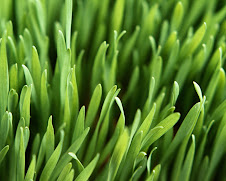On a short list it's pretty clear to see that CFL bulbs are better than incandescent bulbs, and LED bulbs are better than both of them, but one must really pull back the layers of the onion to see the true pros and cons for each comparison.
Here's a great comparison video courtesy of alternativee.org:
It's pretty easy to see where the energy efficiency lies, but many other factors come along with each type of bulb. In my own home, I have opted to go with CFL bulbs in almost all my fixtures minus the fixtures that are on occupancy sensors. CFL bulbs can't handle the constant on/off from the sensors compared to incandescent bulbs. I would love to use Edison base LED bulbs in my home, but the price point is still too high and the technology still has a little ways to go before they can truly compete with CFLs. I do recommend using LEDs for under-cabinet lighting, holiday lighting, and flashlights/lanterns since the technology is pretty stable and the use factor is pretty low.
Each bulb type has a few major drawbacks for me, but as long as you weigh the pros and cons it's easy to derive at a choice.
- Incandescent bulbs use a lot of energy and actually lose a majority of that energy through heat loss. If you live in a hot climate, you really don't need your light bulbs raising your home's temperature causing more money to be spent on cooling. Due to that heat loss, your incandescent bulbs are expelling more heat then you're receiving in actual lumens, i.e. LIGHT.
- CFL bulbs contain mercury which can be dangerous in certain amounts. Due to the mercury in CFL bulbs special precautions should be taken when disposing burnt out or broken bulbs. You should always dispose CFL bulbs at specialized recycling centers... never throw them away with your trash! Some people feel that the actual light output from CFL bulbs is sub-par to incandescent bulbs, but I have never personally had a problem.
- LED bulbs are still just too new in the market place to really be measured against other standard bulbs. Price is certainly a factor right now, but other factors include actual measurement of bulb life span, proper bulb ventilation for cooling, size retro fitting, and actual light output compared to incandescent and CFL bulbs.
There are many types of lighting available in the market place these days. There are also many other bulb types that I did not mention due to there use in commercial settings or the low level of use in residential settings. Lighting technology is still ever changing and manufactures are coming up with new ideas everyday... even the incandescent bulb is still being advanced to keep up with all the other new technological advances. It really comes down to what you want from you light bulb and how much you want to invest in it. Nothing is ever perfect, but as long you do your homework, the power is ultimately in your hands...
All hardware stores including major and mom and pop retailers carry some sort of line of incandescent and CFL bulbs, but LED bulbs are little harder to find. It's always smart to check with you local utility provider before going out to purchase light bulbs, some utility providers provide rebates, coupons, or even discount purchase programs for energy efficient light bulbs. Please see the links below for the Sacramento Valley:
Sacramento Municipal Utility District-
http://www.smud.org/en/rebates/Pages/index.aspx
Pacific Gas & Electric-
http://www.pge.com/myhome/saveenergymoney/rebates/light/products/

